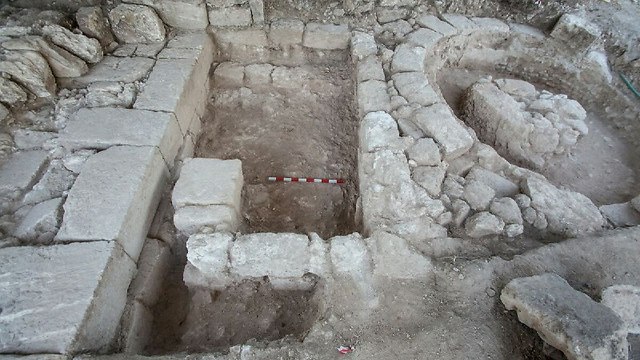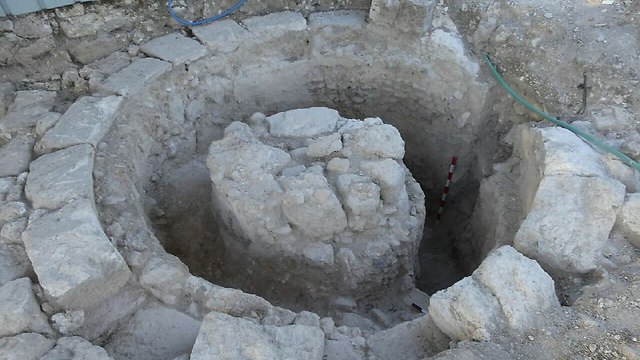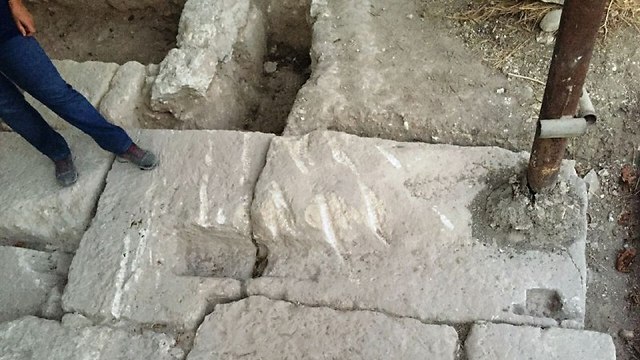

Large Roman gate discovered in Beit Shearim
The find has researchers intrigued, especially the inscription 'The Gates' above the gate; other finds at the site include the threshold of a large gate with a tower built of large dressed stones; Beit Shearim was the seat of the Sanhedrin in the second century CE.
Beit Shearim, located near present day Qiryat Tivon, where the foothills of the Lower Galilee begin to rise up above the Jezreel and Zvulun Vallies, was the seat of the Sanhedrin in the second century CE, and where it's illustrious Head, Rabbi Yehuda Hanasi lived and held court.
The find has researchers intrigued, especially the inscription “The Gates” above the gate.
“Until now we have never discovered any evidence of a relatively small settlement of this type being surrounded by a wall during this period," said Dr. Adi Erlich-Zinman, who is heading the excavation.
“However we are also reasonably sure that the inscription does not refer to the gate, since there is no evidence of any Roman wall in the region having the words 'the gate' written above the gate. This means we have to rethink things."
The finds at the site include the threshold of a large gate with a tower built of large dressed stones.
Beit Shearim, in the Lower Galilee, was a Jewish settlement in the Roman period that culminated in second and third centuries CE. Despite the fact that it was the Seat of the Sanhedrin, it was a relatively small settlement, reflecting the condition of the Jewish community in the area during that period, shortly after the Bar Kokhba rebellion.
“Small communities in general and Jewish ones in particular, were not surrounded by a wall during this period. Until this find, no evidence of such a small settlement being surrounded by a wall has ever been uncovered in Israel. Even much larger Jewish towns like Yodfat, which had walls, did not have the kind of ornate gate we see here”, said Dr. Erlich.
According to Dr. Erlich, one of the more likely explanations was that Beit Shearim served not just as the Seat of the Sanhedrin, but as the seat of the area’s tax collector. "This would mean that despite the town's small size, it would have had a high socio-economic ranking, attracting both wealthy Roman and Jewish residents. This would explain why it was fortified."
The number of other large public buildings discovered at the site give credence to the theory that the town served as the regional tax collection base during the reign of Queen Berenice of Cilicia.
Article reprinted with permission from TPS.


















